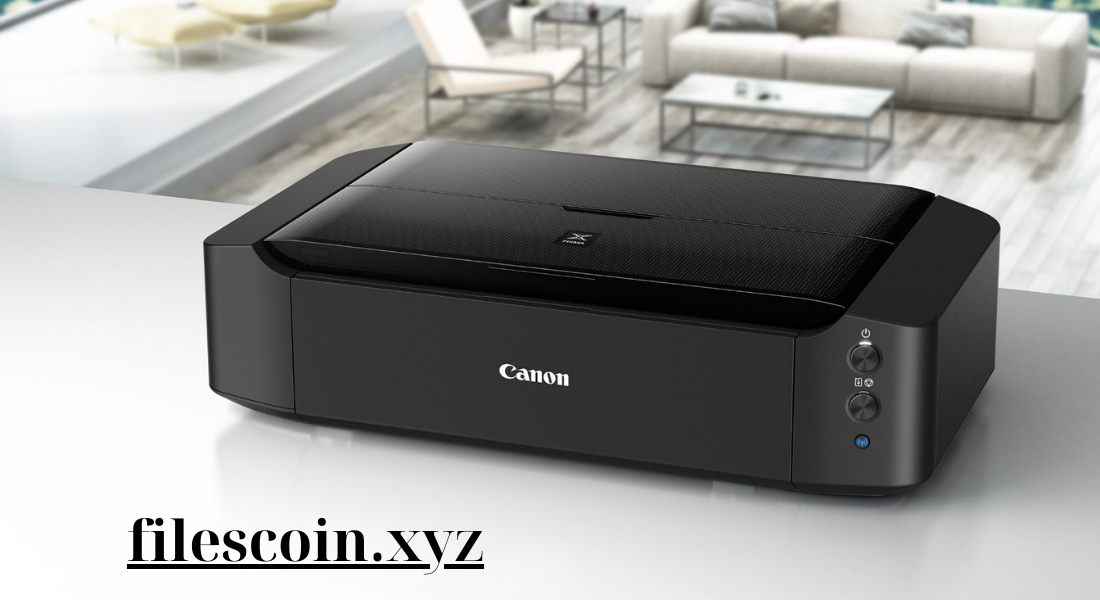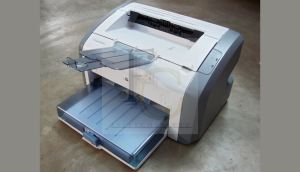Introduction to Canon Printer Wireless Printing
In today’s fast-paced digital world, convenience is key. Canon, a leader in imaging technology, offers a range of printers that support wireless printing, making it easier than ever to print documents from your computer, smartphone, or tablet. This article delves into the advantages of Canon printer wireless printing, how to set it up, and common troubleshooting tips, ensuring you get the most out of your Canon printer.
Why Choose Canon Printer Wireless Printing?
- Convenience and Flexibility
One of the most significant benefits of wireless printing is convenience. You no longer need to be tethered to your printer with a USB cable. With Canon printers, you can print from anywhere in your home or office, as long as you are connected to the same Wi-Fi network. This flexibility allows for seamless integration into your daily tasks, whether you’re in the kitchen, at your desk, or even outside on your patio.
- Multiple Device Compatibility
Canon printer wireless printing supports a variety of devices. Whether you are using a Windows PC, Mac, smartphone, or tablet, you can easily send documents to your printer. Canon’s mobile printing apps, such as Canon PRINT Inkjet/SELPHY, make it simple to print from your mobile device. This cross-platform compatibility enhances productivity, especially in a multi-user environment. Whether you are working on a report, printing photos, or preparing documents for a meeting, the process is simple and efficient.
- Easy Sharing Among Multiple Users
In a home or office setting, multiple users can connect to the same Canon printer without any hassle. This capability not only saves time but also reduces the need for multiple printers. Everyone can easily send their print jobs to a single device, streamlining the workflow. It’s particularly beneficial in shared spaces, where quick access to a printer is essential.
Setting Up Your Canon Printer for Wireless Printing
Step 1: Prepare Your Printer
Before setting up wireless printing, ensure that your Canon printer is powered on and connected to your Wi-Fi network. Check the printer’s display panel for any notifications or instructions. Make sure that the printer is placed within a good range of your Wi-Fi router to avoid connectivity issues.
Step 2: Connect to Wi-Fi
Using the Control Panel:
- On the printer’s control panel, navigate to the wireless settings menu.
- Select the Wi-Fi network you wish to connect to.
- Enter the Wi-Fi password when prompted.
Using WPS (Wi-Fi Protected Setup):
- If your router supports WPS, press the WPS button on the router.
- Within two minutes, press the WPS button on your Canon printer to establish a connection.
Step 3: Install the Canon Printer Software
To enable wireless printing from your devices, download and install the Canon printer software. You can find the software on Canon’s official website. Follow these steps:
- Visit Canon’s Website: Go to the support section and search for your printer model.
- Download the Software: Choose the appropriate driver and software package for your operating system.
- Install the Software: Follow the on-screen instructions to complete the installation.
Step 4: Add the Printer to Your Device
Once the software is installed, you need to add the printer to your computer or mobile device.
For Windows:
- Go to ‘Settings’ > ‘Devices’ > ‘Printers & Scanners’.
- Click ‘Add a printer or scanner’.
- Select your Canon printer from the list and click ‘Add device’.
For Mac:
- Open ‘System Preferences’ and select ‘Printers & Scanners’.
- Click the ‘+’ button to add a new printer.
- Select your Canon printer and click ‘Add’.
For Mobile Devices:
- Download the Canon PRINT Inkjet/SELPHY app from the App Store or Google Play.
- Open the app and follow the prompts to add your printer.
Printing Wirelessly from Different Devices
Printing from a Windows PC
Once your printer is set up, printing from your Windows PC is straightforward. Open the document or image you wish to print, select ‘File’ > ‘Print’, choose your Canon printer, and click ‘Print’. You can also adjust print settings such as paper size and orientation before printing.
Printing from a Mac
Similarly, to print from a Mac, open the document, go to ‘File’ > ‘Print’, select your printer, and adjust any settings before clicking ‘Print’. Mac users can benefit from features like AirPrint for seamless printing without additional software installation.
Mobile Printing
With the Canon PRINT Inkjet/SELPHY app, you can easily print photos and documents from your smartphone or tablet. Open the app, select the file you want to print, adjust the settings, and hit ‘Print’. The app also allows you to scan documents and access cloud services directly from your device.
Advantages of Using Canon Printer Wireless Printing
- Cost-Effective Solution
Wireless printing eliminates the need for multiple printers in a home or office setting, saving you money. Additionally, many Canon printers offer efficient ink usage and cost-effective cartridge options. With features like automatic duplex printing, you can save on paper costs while being environmentally friendly.
- Enhanced Productivity
With wireless printing, users can print documents on the go, which can significantly enhance productivity. You can print important documents while working in another room or even from your smartphone while commuting. This is especially useful for busy professionals who need to maximize their time.
- Reduced Cable Clutter
Wireless printing helps declutter your workspace. Without the need for multiple cables, your setup remains clean and organized, contributing to a more pleasant working environment. A tidy workspace can lead to improved focus and efficiency.
- Remote Printing Capabilities
Some Canon printers offer remote printing capabilities, allowing you to print from anywhere using the cloud. This feature is ideal for users who travel frequently or work remotely, ensuring you can always access important documents.
Troubleshooting Common Wireless Printing Issues
Despite its many advantages, wireless printing can sometimes come with challenges. Here are some common issues and their solutions:
- Printer Not Found on the Network
If your Canon printer cannot be found on the network, check the following:
- Ensure the printer is connected to the correct Wi-Fi network.
- Restart your printer and router to refresh the connection.
- Ensure that your firewall settings are not blocking the printer.
- Poor Print Quality
If you experience issues with print quality, such as streaks or faded colors:
- Check the ink levels and replace cartridges if necessary.
- Run a printer maintenance cycle using the software to clean the print heads.
- Use high-quality paper compatible with your printer model.
- Connection Drops Frequently
If your printer frequently disconnects from the network:
- Ensure that your printer is within range of the Wi-Fi signal.
- Check for interference from other electronic devices and try to minimize it.
- Update the printer’s firmware through the Canon support website.
Conclusion
Canon printer wireless printing offers unparalleled convenience, flexibility, and efficiency for both home and office users. By following the setup process and understanding how to troubleshoot common issues, you can enjoy a seamless printing experience. With Canon’s robust technology and user-friendly applications, wireless printing becomes an essential part of your daily routine. Embrace the future of printing with Canon and enjoy the freedom of wireless connectivity!




